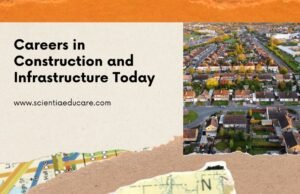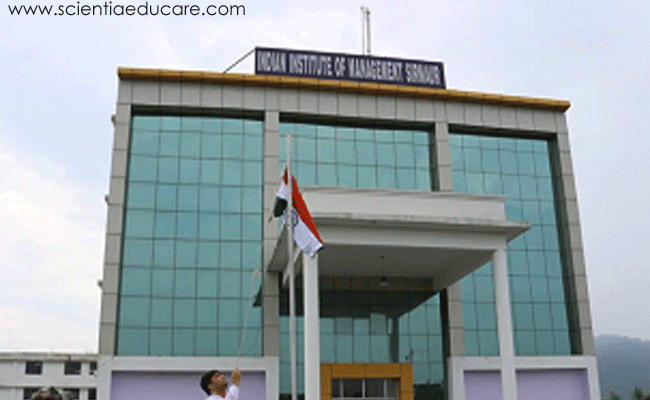Global Career and Job Opportunities
All
- All
- Abnormal Psychology
- Advanced Grammar Concepts
- Advanced Grammar Topics
- Age of Exploration European History
- Agricultural Universities in India
- AI and Career Opportunities
- AI and Ethics
- AI in Business and Economy
- AI in Competitive Exams
- AI in Daily Life
- AI in Defense and Security
- AI in Education
- AI in Entertainment and Media
- AI in Healthcare and Medicine
- AI in Law and Governance
- AI in Science and Technology
- Ancient Europe
- Ancient History
- Animal Physiology
- Applied Economics
- Applied Life Sciences
- Art, Culture and Philosophy European History
- Basic Economics Concepts
- Basics of English Grammar
- Beauty
- Behavioral Psychology
- Biochemistry
- Biological Psychology
- Biology Basics and Fundamentals
- Biology Topics with MCQs
- Biophysics and Structural Biology
- Biotechnology
- Botany
- Career Article
- CBSE Schools in Assam
- CBSE Schools in India
- CBSE Syllabus
- Cell Biology
- Central Universities in India
- Clinical Psychology
- Cognitive Psychology
- Colonialism and Its Impact European History
- Creative Grammar Topics
- Cultural History
- Cultural Psychology
- Culture
- Culture and Society
- Development Economics
- Developmental Biology
- Developmental Biology and Embryology
- Developmental Psychology
- Dining
- Ecology
- Ecology and Environmental Biology
- Economic History
- Economic Systems
- Economics and Finance
- Economics Topics Exams oriented
- Economics Topics with MCQs
- Education
- Educational Blogs
- Educational Institutions in Assam
- Educational Institutions in India
- Educational Institutions Worldwide
- Educational Psychology
- Endocrinology
- English Grammar
- English Language and Literature
- Environment and Ecology
- Environmental Biology
- Error Identification and Correction
- Essay Writing
- European Economy
- European History
- European History Key Personalities
- European Political History
- European Social Movements
- Evolutionary Biology
- Exam-Focused Practice Topics
- Examinations in India
- Experimental Psychology
- Fashion
- Featured
- Fitness
- Forensic Psychology
- Future Prospects of AI
- Gadgets
- General European History
- General Overview of AI
- Genetics
- Genetics and Evolution
- Global Career and Job Opportunities
- Grammar for Academic Excellence
- Grammar for Competitive Exams
- Grammar for Spoken English
- Health
- Health and Fitness
- Health Psychology
- Historical and Contemporary Economics
- History and Civics
Explore Diverse Careers in Construction and Infrastructure Today
Careers in Construction and Infrastructure
The construction and infrastructure sectors are pivotal to global economic development, offering a diverse array of career opportunities. From hands-on...
Tourism Worldwide
All
- All
- Abnormal Psychology
- Advanced Grammar Concepts
- Advanced Grammar Topics
- Age of Exploration European History
- Agricultural Universities in India
- AI and Career Opportunities
- AI and Ethics
- AI in Business and Economy
- AI in Competitive Exams
- AI in Daily Life
- AI in Defense and Security
- AI in Education
- AI in Entertainment and Media
- AI in Healthcare and Medicine
- AI in Law and Governance
- AI in Science and Technology
- Ancient Europe
- Ancient History
- Animal Physiology
- Applied Economics
- Applied Life Sciences
- Art, Culture and Philosophy European History
- Basic Economics Concepts
- Basics of English Grammar
- Beauty
- Behavioral Psychology
- Biochemistry
- Biological Psychology
- Biology Basics and Fundamentals
- Biology Topics with MCQs
- Biophysics and Structural Biology
- Biotechnology
- Botany
- Career Article
- CBSE Schools in Assam
- CBSE Schools in India
- CBSE Syllabus
- Cell Biology
- Central Universities in India
- Clinical Psychology
- Cognitive Psychology
- Colonialism and Its Impact European History
- Creative Grammar Topics
- Cultural History
- Cultural Psychology
- Culture
- Culture and Society
- Development Economics
- Developmental Biology
- Developmental Biology and Embryology
- Developmental Psychology
- Dining
- Ecology
- Ecology and Environmental Biology
- Economic History
- Economic Systems
- Economics and Finance
- Economics Topics Exams oriented
- Economics Topics with MCQs
- Education
- Educational Blogs
- Educational Institutions in Assam
- Educational Institutions in India
- Educational Institutions Worldwide
- Educational Psychology
- Endocrinology
- English Grammar
- English Language and Literature
- Environment and Ecology
- Environmental Biology
- Error Identification and Correction
- Essay Writing
- European Economy
- European History
- European History Key Personalities
- European Political History
- European Social Movements
- Evolutionary Biology
- Exam-Focused Practice Topics
- Examinations in India
- Experimental Psychology
- Fashion
- Featured
- Fitness
- Forensic Psychology
- Future Prospects of AI
- Gadgets
- General European History
- General Overview of AI
- Genetics
- Genetics and Evolution
- Global Career and Job Opportunities
- Grammar for Academic Excellence
- Grammar for Competitive Exams
- Grammar for Spoken English
- Health
- Health and Fitness
- Health Psychology
- Historical and Contemporary Economics
- History and Civics
Tourism in India
All
- All
- Abnormal Psychology
- Advanced Grammar Concepts
- Advanced Grammar Topics
- Age of Exploration European History
- Agricultural Universities in India
- AI and Career Opportunities
- AI and Ethics
- AI in Business and Economy
- AI in Competitive Exams
- AI in Daily Life
- AI in Defense and Security
- AI in Education
- AI in Entertainment and Media
- AI in Healthcare and Medicine
- AI in Law and Governance
- AI in Science and Technology
- Ancient Europe
- Ancient History
- Animal Physiology
- Applied Economics
- Applied Life Sciences
- Art, Culture and Philosophy European History
- Basic Economics Concepts
- Basics of English Grammar
- Beauty
- Behavioral Psychology
- Biochemistry
- Biological Psychology
- Biology Basics and Fundamentals
- Biology Topics with MCQs
- Biophysics and Structural Biology
- Biotechnology
- Botany
- Career Article
- CBSE Schools in Assam
- CBSE Schools in India
- CBSE Syllabus
- Cell Biology
- Central Universities in India
- Clinical Psychology
- Cognitive Psychology
- Colonialism and Its Impact European History
- Creative Grammar Topics
- Cultural History
- Cultural Psychology
- Culture
- Culture and Society
- Development Economics
- Developmental Biology
- Developmental Biology and Embryology
- Developmental Psychology
- Dining
- Ecology
- Ecology and Environmental Biology
- Economic History
- Economic Systems
- Economics and Finance
- Economics Topics Exams oriented
- Economics Topics with MCQs
- Education
- Educational Blogs
- Educational Institutions in Assam
- Educational Institutions in India
- Educational Institutions Worldwide
- Educational Psychology
- Endocrinology
- English Grammar
- English Language and Literature
- Environment and Ecology
- Environmental Biology
- Error Identification and Correction
- Essay Writing
- European Economy
- European History
- European History Key Personalities
- European Political History
- European Social Movements
- Evolutionary Biology
- Exam-Focused Practice Topics
- Examinations in India
- Experimental Psychology
- Fashion
- Featured
- Fitness
- Forensic Psychology
- Future Prospects of AI
- Gadgets
- General European History
- General Overview of AI
- Genetics
- Genetics and Evolution
- Global Career and Job Opportunities
- Grammar for Academic Excellence
- Grammar for Competitive Exams
- Grammar for Spoken English
- Health
- Health and Fitness
- Health Psychology
- Historical and Contemporary Economics
- History and Civics
City Palace, Udaipur: A Regal Marvel of Rajasthan
City Palace, Udaipur: A Regal Marvel of Rajasthan
Introduction
Nestled on the eastern banks of Lake Pichola, City Palace, Udaipur, is a majestic symbol of Rajasthan’s...
Amber Fort, Jaipur: A Majestic Blend of History, Architecture and Culture
Amber Fort, Jaipur: A Majestic Blend of History, Architecture and Culture
Introduction
Amber Fort, also known as Amer Fort, is a magnificent fortress located in Jaipur,...
Agricultural Universities in India
All
- All
- Abnormal Psychology
- Advanced Grammar Concepts
- Advanced Grammar Topics
- Age of Exploration European History
- Agricultural Universities in India
- AI and Career Opportunities
- AI and Ethics
- AI in Business and Economy
- AI in Competitive Exams
- AI in Daily Life
- AI in Defense and Security
- AI in Education
- AI in Entertainment and Media
- AI in Healthcare and Medicine
- AI in Law and Governance
- AI in Science and Technology
- Ancient Europe
- Ancient History
- Animal Physiology
- Applied Economics
- Applied Life Sciences
- Art, Culture and Philosophy European History
- Basic Economics Concepts
- Basics of English Grammar
- Beauty
- Behavioral Psychology
- Biochemistry
- Biological Psychology
- Biology Basics and Fundamentals
- Biology Topics with MCQs
- Biophysics and Structural Biology
- Biotechnology
- Botany
- Career Article
- CBSE Schools in Assam
- CBSE Schools in India
- CBSE Syllabus
- Cell Biology
- Central Universities in India
- Clinical Psychology
- Cognitive Psychology
- Colonialism and Its Impact European History
- Creative Grammar Topics
- Cultural History
- Cultural Psychology
- Culture
- Culture and Society
- Development Economics
- Developmental Biology
- Developmental Biology and Embryology
- Developmental Psychology
- Dining
- Ecology
- Ecology and Environmental Biology
- Economic History
- Economic Systems
- Economics and Finance
- Economics Topics Exams oriented
- Economics Topics with MCQs
- Education
- Educational Blogs
- Educational Institutions in Assam
- Educational Institutions in India
- Educational Institutions Worldwide
- Educational Psychology
- Endocrinology
- English Grammar
- English Language and Literature
- Environment and Ecology
- Environmental Biology
- Error Identification and Correction
- Essay Writing
- European Economy
- European History
- European History Key Personalities
- European Political History
- European Social Movements
- Evolutionary Biology
- Exam-Focused Practice Topics
- Examinations in India
- Experimental Psychology
- Fashion
- Featured
- Fitness
- Forensic Psychology
- Future Prospects of AI
- Gadgets
- General European History
- General Overview of AI
- Genetics
- Genetics and Evolution
- Global Career and Job Opportunities
- Grammar for Academic Excellence
- Grammar for Competitive Exams
- Grammar for Spoken English
- Health
- Health and Fitness
- Health Psychology
- Historical and Contemporary Economics
- History and Civics
Tamil Nadu Agricultural University: A Premier Hub for Agricultural Education and Research
Tamil Nadu Agricultural University: A Premier Hub for Agricultural Education and Research
Introduction
Tamil Nadu Agricultural University (TNAU), located in Coimbatore, Tamil Nadu, is one of...
Sri Venkateswara Veterinary University, Tirupati: A Premier Institution for Veterinary and Animal Sciences
Sri Venkateswara Veterinary University, Tirupati: A Premier Institution for Veterinary and Animal Sciences
Introduction
Sri Venkateswara Veterinary University (SVVU) is one of the premier veterinary universities...
Sardar Vallabhbhai Patel University of Agriculture and Technology, Uttar Pradesh: A Premier Institution for...
Sardar Vallabhbhai Patel University of Agriculture and Technology, Uttar Pradesh: A Premier Institution for Agricultural Education
Introduction
Sardar Vallabhbhai Patel University of Agriculture and Technology (SVPUAT)...
Lala Lajpat Rai University of Veterinary & Animal Sciences: A Premier Institution in Haryana
Lala Lajpat Rai University of Veterinary & Animal Sciences: A Premier Institution in Haryana
Introduction
Lala Lajpat Rai University of Veterinary & Animal Sciences (LUVAS), located...
Sardarkrushinagar Dantiwada Agricultural University, Gujarat: A Hub for Agricultural Excellence
Sardarkrushinagar Dantiwada Agricultural University, Gujarat: A Hub for Agricultural Excellence
Introduction
Sardarkrushinagar Dantiwada Agricultural University (SDAU) is a premier agricultural university in Gujarat, India. Established with...
Ecology and Environmental Biology
All
- All
- Abnormal Psychology
- Advanced Grammar Concepts
- Advanced Grammar Topics
- Age of Exploration European History
- Agricultural Universities in India
- AI and Career Opportunities
- AI and Ethics
- AI in Business and Economy
- AI in Competitive Exams
- AI in Daily Life
- AI in Defense and Security
- AI in Education
- AI in Entertainment and Media
- AI in Healthcare and Medicine
- AI in Law and Governance
- AI in Science and Technology
- Ancient Europe
- Ancient History
- Animal Physiology
- Applied Economics
- Applied Life Sciences
- Art, Culture and Philosophy European History
- Basic Economics Concepts
- Basics of English Grammar
- Beauty
- Behavioral Psychology
- Biochemistry
- Biological Psychology
- Biology Basics and Fundamentals
- Biology Topics with MCQs
- Biophysics and Structural Biology
- Biotechnology
- Botany
- Career Article
- CBSE Schools in Assam
- CBSE Schools in India
- CBSE Syllabus
- Cell Biology
- Central Universities in India
- Clinical Psychology
- Cognitive Psychology
- Colonialism and Its Impact European History
- Creative Grammar Topics
- Cultural History
- Cultural Psychology
- Culture
- Culture and Society
- Development Economics
- Developmental Biology
- Developmental Biology and Embryology
- Developmental Psychology
- Dining
- Ecology
- Ecology and Environmental Biology
- Economic History
- Economic Systems
- Economics and Finance
- Economics Topics Exams oriented
- Economics Topics with MCQs
- Education
- Educational Blogs
- Educational Institutions in Assam
- Educational Institutions in India
- Educational Institutions Worldwide
- Educational Psychology
- Endocrinology
- English Grammar
- English Language and Literature
- Environment and Ecology
- Environmental Biology
- Error Identification and Correction
- Essay Writing
- European Economy
- European History
- European History Key Personalities
- European Political History
- European Social Movements
- Evolutionary Biology
- Exam-Focused Practice Topics
- Examinations in India
- Experimental Psychology
- Fashion
- Featured
- Fitness
- Forensic Psychology
- Future Prospects of AI
- Gadgets
- General European History
- General Overview of AI
- Genetics
- Genetics and Evolution
- Global Career and Job Opportunities
- Grammar for Academic Excellence
- Grammar for Competitive Exams
- Grammar for Spoken English
- Health
- Health and Fitness
- Health Psychology
- Historical and Contemporary Economics
- History and Civics
Ecosystems: Structure, Function and Types
Ecosystems: Structure, Function and Types – Understanding the Core of Ecological Balance
Introduction
An ecosystem refers to a biological community of interacting organisms and their physical...
Habitat Fragmentation and Its Effects on Wildlife
The Impact of Habitat Fragmentation on Wildlife: Understanding the Consequences and Solutions
Introduction
Habitat fragmentation is a significant ecological process that disrupts the natural environment, leading...
Endangered Species: Extinction and Protection Strategies
Understanding the Causes of Extinction and Protection Strategies for Endangered Species
The rapid decline in global biodiversity has become a pressing concern, with numerous species...
Climate Change: Impact on Ecosystems and Biodiversity
Climate Change and Its Profound Impact on Ecosystems and Biodiversity
Climate change, driven by human activities such as the burning of fossil fuels and deforestation,...
Wildlife Conservation: Endangered Species and Protection Efforts
Wildlife Conservation: Protecting Endangered Species and Efforts for Their Preservation
Introduction:
Wildlife conservation is crucial to maintaining the balance of ecosystems and protecting biodiversity. Endangered species,...
Research laboratories in India
All
- All
- Abnormal Psychology
- Advanced Grammar Concepts
- Advanced Grammar Topics
- Age of Exploration European History
- Agricultural Universities in India
- AI and Career Opportunities
- AI and Ethics
- AI in Business and Economy
- AI in Competitive Exams
- AI in Daily Life
- AI in Defense and Security
- AI in Education
- AI in Entertainment and Media
- AI in Healthcare and Medicine
- AI in Law and Governance
- AI in Science and Technology
- Ancient Europe
- Ancient History
- Animal Physiology
- Applied Economics
- Applied Life Sciences
- Art, Culture and Philosophy European History
- Basic Economics Concepts
- Basics of English Grammar
- Beauty
- Behavioral Psychology
- Biochemistry
- Biological Psychology
- Biology Basics and Fundamentals
- Biology Topics with MCQs
- Biophysics and Structural Biology
- Biotechnology
- Botany
- Career Article
- CBSE Schools in Assam
- CBSE Schools in India
- CBSE Syllabus
- Cell Biology
- Central Universities in India
- Clinical Psychology
- Cognitive Psychology
- Colonialism and Its Impact European History
- Creative Grammar Topics
- Cultural History
- Cultural Psychology
- Culture
- Culture and Society
- Development Economics
- Developmental Biology
- Developmental Biology and Embryology
- Developmental Psychology
- Dining
- Ecology
- Ecology and Environmental Biology
- Economic History
- Economic Systems
- Economics and Finance
- Economics Topics Exams oriented
- Economics Topics with MCQs
- Education
- Educational Blogs
- Educational Institutions in Assam
- Educational Institutions in India
- Educational Institutions Worldwide
- Educational Psychology
- Endocrinology
- English Grammar
- English Language and Literature
- Environment and Ecology
- Environmental Biology
- Error Identification and Correction
- Essay Writing
- European Economy
- European History
- European History Key Personalities
- European Political History
- European Social Movements
- Evolutionary Biology
- Exam-Focused Practice Topics
- Examinations in India
- Experimental Psychology
- Fashion
- Featured
- Fitness
- Forensic Psychology
- Future Prospects of AI
- Gadgets
- General European History
- General Overview of AI
- Genetics
- Genetics and Evolution
- Global Career and Job Opportunities
- Grammar for Academic Excellence
- Grammar for Competitive Exams
- Grammar for Spoken English
- Health
- Health and Fitness
- Health Psychology
- Historical and Contemporary Economics
- History and Civics
IIP – Indian Institute of Petroleum Dehradun
IIP - Indian Institute of Petroleum Dehradun
CSIR-Indian Institute of Petroleum (CSIR-IIP) is one of the leading constituent laboratories of the Council of Scientific &...
CEERI – Central Electronics Engineering Research Institute Pilani
CEERI - Central Electronics Engineering Research Institute Pilani
Central Electronics Engineering Research Institute, located at Pilani, Distt.Jhunjhunu, Rajasthan and Chennai, Tamil Nadu is a pioneer...
IMTECH – Institute of Microbial Technology Chandigarh
IMTECH - Institute of Microbial Technology Chandigarh
The Institute of Microbial Technology, based in Chandigarh, India, is one of the constituent establishments of the Council...
Central Building Research Institute, Roorkee
CSIR-Central Building Research Institute, Roorkee
The Central Building Research Institute, Roorkee, India, has been vested with the responsibility of generating, cultivating and promoting building science...
NBRI – National Botanical Research Institute Lucknow
NBRI - National Botanical Research Institute Lucknow
The National Botanical Research Institute is a research institute of CSIR in Lucknow. It is engaged in the...



















































